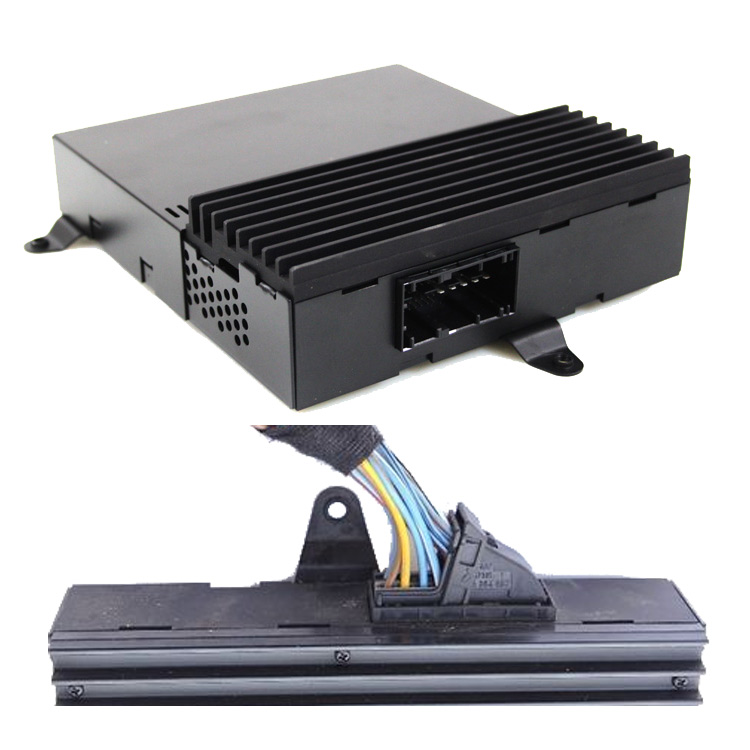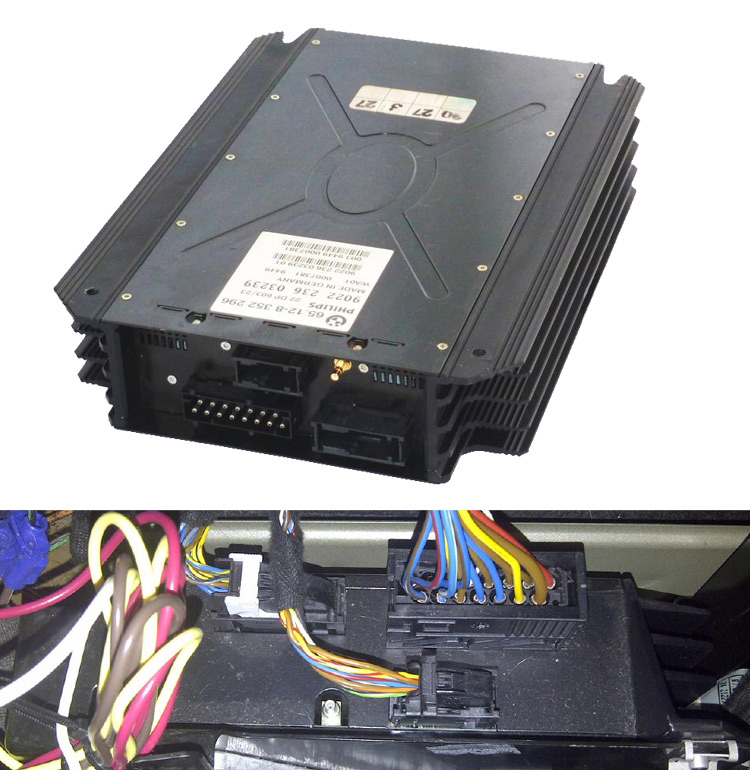BMW X5 E53
Production years 2000 - 2006
The E53 is the first generation of the X5 model line.
There are two types of radios originally fitted to the BMW X5 E53, standard and navigation. The audio system in the car is wired differently depending on which type of radio is originally fitted.
Cars with a standard basic radio have a more traditional setup. There is a quadlock connector at the back of the radio in the dashboard (some very early models have a round pin BMW connector, these models are rare) and the radio supplies audio directly to the speakers. Installations on these cars are straight forward, using adapters at the back of the radio to fit either a new stereo or a handsfree kit.
Cars with the navigation radios have just a screen in the dashboard, other components of the audio system are located elsewhere in the car. The tuner module is under the boot floor next to the battery, the navigation module and cd changer is in the rear left quarter panel, often there is also an audio amplifier in the rear left quarter panel too.
Installations in these cars are more complicated, extensions need to be run from the rear to the front.
The navigation radios also have different fittings into the dashboard, brackets need to be fixed into the dashboard in order to fit a new stereo. We have a special kit for this supplied with fitting instructions.
There are two types of amplifiers fitted to BMW X5 cars, one known as a Power Amplifier is a traditional amplifier. It is switches on by a +12V signal (this is the same signal as the antenna turn on) and it receives a standard audio signal from the radio. New radios can be easily integrated into these systems without the need for special adapters or interfaces.
The other type of amplifier is the DSP (Digital Signal Processing) Amplifier. These amplifiers are turned on by a data signal on the cars I-Bus data network, when the original radio is removed the amplifier can no longer be switched on. These amplifiers need to be bypassed in order to fit a new stereo.
Below is an image of the Power Amplifier.
Below is an image of the DSP amplifier
The two amplifiers can be differentiated by the style of the heatsink fins and connectors used. The Power amp uses one large connector with a locking latch, the DSP amp uses three connectors, one large round pin connector and two smaller connectors with locking latches.